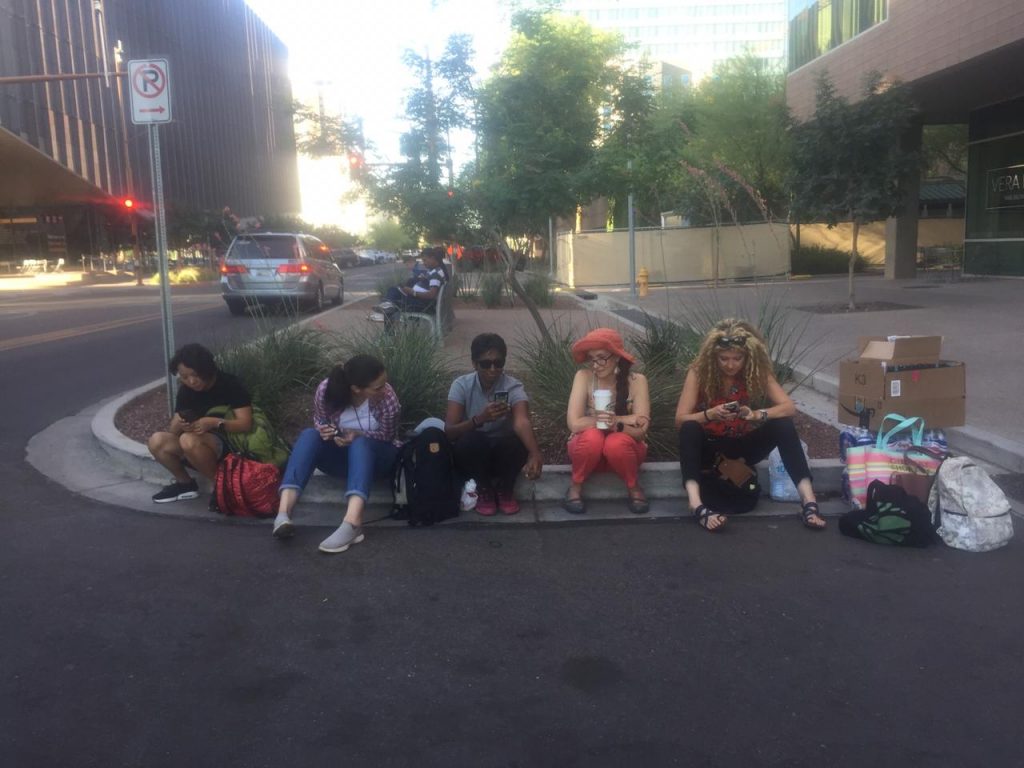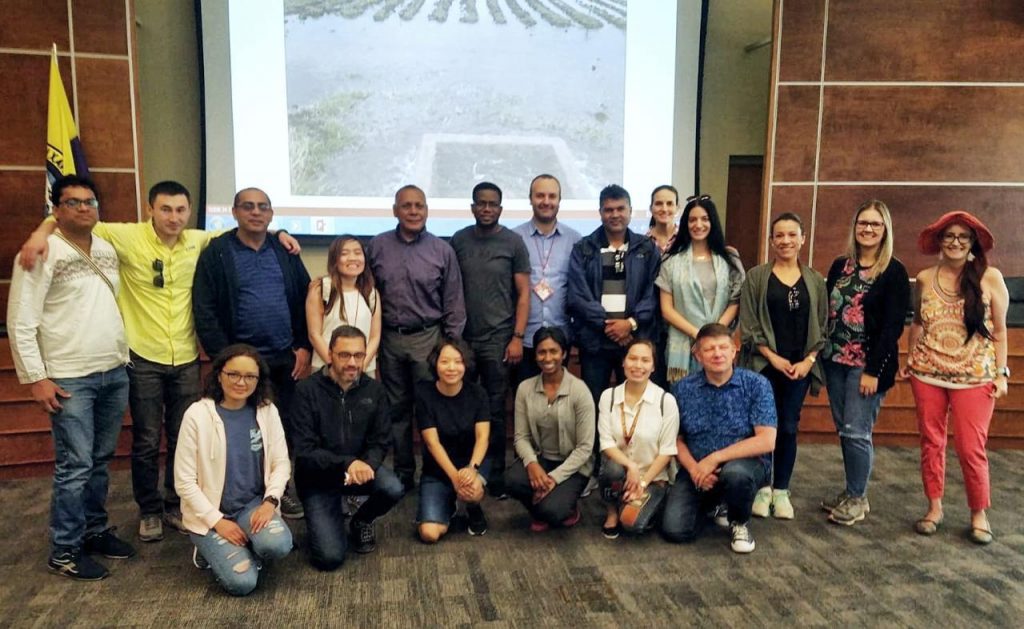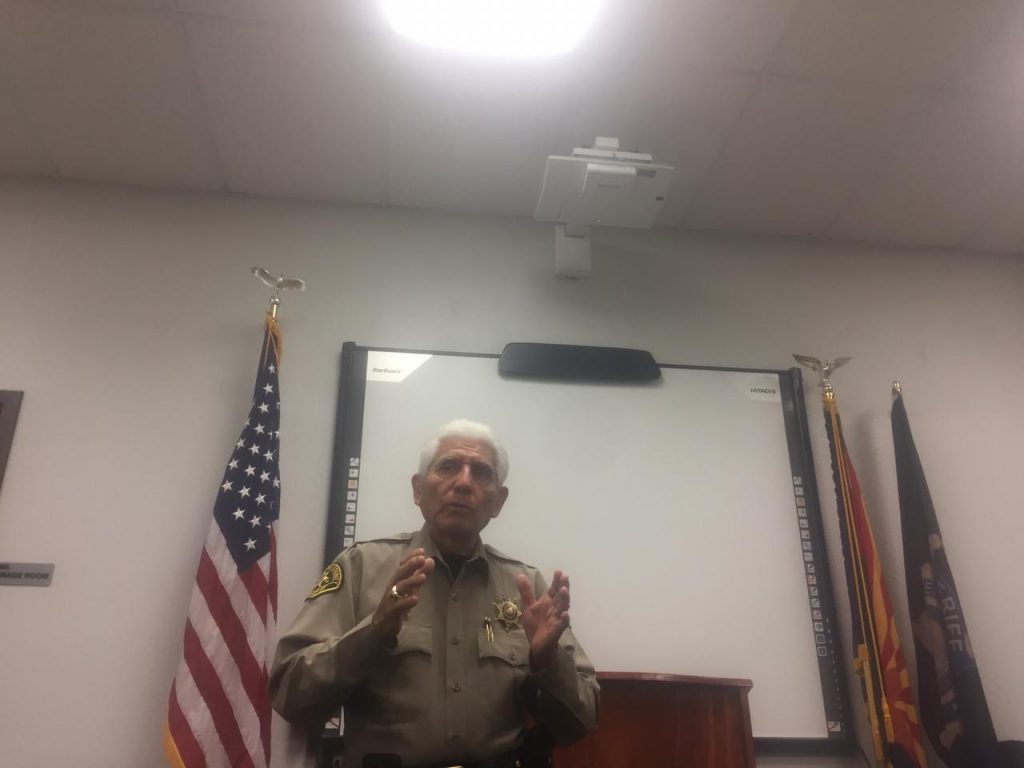It was 5:38 am, in a WhatsApp group. “Good morning, see you in 50 minutes behind the school 6:30 am” read the text from Alma Telibecirevic , Administrative Director for the SUSI program. Many arrived earlier, gathered inside at Taylor Place, while others were sitting outside on the street where the bus was supposed to stop. Yet Alma looked worried, calling and texting on her phone until the bus finally arrived to make our Saturday activities happen.

For the previous two weeks, our Saturday activities involved visiting the Grand Canyon, and volunteering at Central Arizona Shelter Services (CASS). This time we were brought to Nogales, on the Arizona border, meeting with important people to learn about their work situations and capturing extraordinary places.
Dawn Gilpin, Cronkite School Associate Professor and also the Academic Director for SUSI, said it’s important for professors and journalists to form their own impressions. “We have been taking our scholars to the border for years, even before these issues emerged. Now that it’s a major topic it’s important to build your own impression on the issue beyond media reporting,” she said.
“Everyone around the world is taking about it, so we thought it was a good opportunity to let you see firsthand what it actually looks like. You see it in the news, now you can see it in person.”
San Xavier district of the Tohono O’Odham Nation
The meeting with Agustin G. Nunez, a chairman serving his eighth four-year term leading his people, gave us some knowledge and background information about the community. After a 30-minute presentation about the history of the community affected, Nunez noted that the media in the past focused mainly on negative issues and sensationalized news about indigenous peoples just to get readership. “Some publications show improvement but there is a lot of work still to be done, to ensure they portray accurate information. This is very important for us,” he said.

Just down the street from the San Xavier district office stands the Mission San Xavier del Bac, a white church with accompanying museum. The woman staffing the museum counter said this historic landmark was the second biggest tourist destination after the Grand Canyon.

Yurii Havrylets , Assistant Professor from the Institute of Journalism at Taras Shevchenko National University of Kyiv (TSNUK), said the church is very rich in culture. “I am a Christian, so it felt great to see the church. It’s very nice, and great culture. I sat and prayed for around 10 minutes. It’s the same religion but different practices,” he said.

Meeting with Santa Cruz County Sheriff Tony Estrada
The 75-year–old Estrada started working in the Sheriff’s office in January 1993, and has to deal closely with illegal immigration and the drug problem. “As soon as I arrived in my office, I started having meetings with my commanders to see what issues people were facing that needed immediate action,” he said.

Estrada expressed his concerns about immigration reform and border control. He said the border control patrols didn’t stop people from coming across, but simply made it more dangerous. He said people end up coming through the valley, over the mountains. “One year we recovered over two thousand bodies of remains of crossing people who had died because they were too cold or too hot, or they may have been assaulted and killed,” he said.
Nevertheless Tony remains hopeful for change. “We are the greatest country in the world but we make a lot of great mistakes. I hope we will see some changes soon, so we can get back to normal and everything will be fine.”

Exploring the Border Fence
Grisel Salazar, Associate Professor at Centro de Investigación y Docencia Económicas (CIDE), had no initial interest in migration but became emotional when she arrived at the border. “I felt very shocked to see the border. It’s always on the news but I’ve never been to the actual place., I have never been interested in migration, but now I’ve become interested since being in Phoenix. I keep thinking there are people on at the street or kitchen, many from Mexico and the Middle East. They have extraordinary stories to tell and have often gone through traumatic experiences they might share,” she noted.
Nick Philips, a journalist from Nogales International, just joined the newspaper seven months ago. He said about a quarter of his reporting is about border issues. Last month a man tried to jump off the fence onto the American side; it has not been confirmed whether he was injured. Philips said he thinks it’s important to tell stories about migration by trying to find something unique. “Now I’m trying to connect with people who have a work visa but have been deported. I try to be direct and concise and informative to the public,” he said. Al
Although our visit was not very long, it was a great opportunity for us to visit places and observe for ourselves. The chance to listen and ask direct questions of officials and others working at ground level is crucial for us to gain real understanding and knowledge about issues. For example, for my country safe migration is also a huge problem that needs to be handled. And amid the heaviness, visiting the art town showed us the culture of a unique place. The town is very beautifully decorated both indoors and out, and peaceful despite the harsh weather.